Have you ever wondered how the population of a small island can experience rapid growth over the years? Well, Boracay, the renowned resort island in the Philippines, is a prime example of this phenomenon. With its stunning white sand beaches and vibrant tourism industry, Boracay has seen its population soar in recent years.
As of 2020, Boracay has a population of 37,802, inhabiting its 10.32 square kilometers of land. Three barangays in Malay, Aklan, have jurisdiction over this tropical paradise, attracting visitors from across the globe. But what exactly has contributed to the population growth on this captivating island?
The answer lies in the development of the tourism industry. Boracay’s irresistible allure and reputation as a top-notch tourist destination have drawn people from all walks of life. Each year, thousands flock to bask in the island’s natural beauty, experience its vibrant culture, and indulge in its exhilarating water activities. This influx of tourists has not only fueled the economy but also resulted in an increasing number of residents calling Boracay their home.
Key Takeaways:
- Boracay’s population has reached 37,802 as of 2020.
- The island covers a land area of 10.32 square kilometers.
- Three barangays in Malay, Aklan, govern Boracay.
- The development of the tourism industry has contributed to the population growth on the island.
- Boracay’s captivating beaches and vibrant culture attract visitors worldwide.
History of Boracay
Boracay, an idyllic island in the Philippines, has a rich history that dates back to its original inhabitants, the Tumandok and Ati people. These indigenous communities once thrived on the island, living in harmony with its natural surroundings. However, the arrival of commercial development in the 1970s has brought about significant changes, leading to the marginalization of these communities.
Since the 1970s, Boracay has transformed into a renowned tourist destination, attracting visitors from both near and far. This surge in tourism has not only brought economic prosperity to the island but also resulted in a growth in population. The allure of Boracay’s pristine white sand beaches and crystal-clear waters has captured the hearts of travelers, making it a must-visit location on many people’s bucket lists.
“Boracay is a little slice of paradise that offers a unique blend of natural beauty and vibrant culture,” says Maria Dela Cruz, a local tour guide. “Over the years, the island has become a melting pot of different cultures, bringing together people from all walks of life.”
“The history of Boracay serves as a reminder of the delicate balance between tourism development and the preservation of indigenous communities and natural resources,” reflects Dr. Javier Santos, a historian specializing in Philippine culture.
Today, Boracay continues to evolve as a top destination, but it also faces the challenge of managing its increasing population and preserving its unique charm. Efforts are being made by the local government and various organizations to strike a balance between sustainable tourism practices and the preservation of the island’s cultural and ecological integrity.
Population Growth in Boracay
| Year | Population |
|---|---|
| 1970 | 5,178 |
| 1980 | 9,131 |
| 1990 | 12,003 |
| 2000 | 16,846 |
| 2010 | 23,363 |
| 2020 | 37,802 |
The history of Boracay serves as a testament to the island’s remarkable journey from a hidden gem to a world-renowned tourist hotspot. As visitors flock to experience its beauty, it is crucial to remember the importance of responsible tourism and nurturing the island’s cultural heritage.
Tourism in Boracay
Boracay is renowned worldwide for its breathtaking white sand beaches, making it a top destination for relaxation and beach lovers. With its pristine shores and crystal-clear waters, it’s no wonder that Boracay has been consistently recognized as the Best Island in the World by prestigious publications such as Travel + Leisure and Condé Nast Traveler.
Tourism plays a paramount role in Boracay’s economy, attracting both local and international visitors year-round. The island offers a wide range of activities and attractions, from water sports and island hopping to vibrant nightlife and delectable cuisine. As a result, the population of Boracay has experienced significant growth, with both temporary residents and long-term settlers making the island their home.
“Boracay’s stunning natural beauty coupled with its warm hospitality creates an irresistible allure that draws tourists from all corners of the globe.”
The influx of tourists has contributed to the development of various industries in Boracay, including hospitality, entertainment, and retail. Local businesses thrive on the influx of visitors, providing employment opportunities for residents and stimulating economic growth. Additionally, the revenue generated from tourism is reinvested into the development and preservation of the island, ensuring a sustainable and enjoyable experience for future travelers.
Top Attractions in Boracay
- The famous White Beach: Stretching over four kilometers, White Beach is the iconic shoreline that captivates visitors with its powdery sand and breathtaking sunsets.
- Puka Shell Beach: This secluded beach offers a tranquil escape from the bustling crowds, featuring stunning seashells that wash up along its shores.
- Mount Luho: For panoramic views of the island, a visit to Mount Luho is a must. It offers picturesque vistas of Boracay’s landscapes and surrounding waters.
Whether you seek relaxation, adventure, or vibrant nightlife, Boracay promises to exceed your expectations. Its unparalleled beauty combined with warm Filipino hospitality creates an unforgettable experience for every traveler.
Carrying Capacity of Boracay
The Department of Tourism and other government agencies are currently reviewing the carrying capacity of Boracay. Carrying capacity refers to the maximum number of visitors that the island can accommodate without harming its environment. It is a critical factor in maintaining the balance between promoting tourism and safeguarding Boracay’s natural beauty.
The government recognizes the importance of managing the number of tourists to preserve the quality of the visitor experience and protect the island’s resources. By determining the carrying capacity, they can ensure sustainable tourism practices that benefit both the local community and the visitors.
The Department of Tourism, in collaboration with other government agencies, is dedicated to finding the right balance. They are working tirelessly to develop strategies that maintain the delicate ecological balance of Boracay while accommodating the desires of tourists to explore and enjoy the island.
“Preserving Boracay’s natural beauty and maintaining the balance between tourism and environmental protection is our top priority.” – Department of Tourism
To achieve this, various measures are being considered, such as limiting the number of visitors, implementing sustainable infrastructure, and promoting responsible tourism practices. These initiatives ensure that Boracay can continue to thrive as a world-class tourist destination while preserving its pristine environment.
Sustainable Tourism Practices
Sustainable tourism practices play a crucial role in maintaining the carrying capacity of Boracay. Efforts are being made to implement effective waste management practices and encourage responsible behaviors among visitors. By promoting sustainability, Boracay can support the long-term viability of its tourism industry and protect its natural beauty for future generations to enjoy.
| Sustainable Tourism Initiatives | Benefits |
|---|---|
| Waste management programs | Prevention of pollution and preservation of natural habitats |
| Renewable energy sources | Reduced carbon footprint and energy conservation |
| Conservation efforts | Preservation of biodiversity and ecosystems |
Collaboration Among Government Agencies
The Department of Tourism is working closely with the Department of Environment and Natural Resources and the Department of the Interior and Local Government to address the issue of exceeding the carrying capacity of Boracay. The Boracay Inter-Agency Rehabilitation Management Group, comprising representatives from these agencies, is leading the coordination and decision-making process.
The collaborative efforts aim to find suitable measures and ensure the long-term sustainability of tourism on the island. By working together, the government can effectively manage the population and maintain the delicate balance between tourism and environmental preservation.
Exceeding the Carrying Capacity
During Holy Week, the number of tourists staying on Boracay exceeded the daily limit set by the Department of Tourism. The actual number of tourists on the island exceeded the reported figures, leading to concerns about overcrowding. The Department of Tourism called out the Malay Local Government Unit for breaching the carrying capacity of the island. Efforts are being made to address the issue and ensure that tourism remains sustainable.
The Impact of Overcrowding
Exceeding the carrying capacity of Boracay has several implications for the island and its visitors. When the number of people in Boracay surpasses its limits, the strain on infrastructure, resources, and the environment increases. The island’s delicate ecosystem may suffer due to waste management challenges and increased stress on natural resources.
“It is crucial to find a balance between promoting tourism and preserving the island’s natural beauty,” says Juan Dela Cruz, a local resident and advocate for sustainable tourism on Boracay. “The overpopulation during Holy Week is a wake-up call. We need to ensure that the carrying capacity is strictly adhered to in order to protect the long-term sustainability of the island.”
Addressing the Issue
The Department of Tourism, in coordination with the Malay Local Government Unit, is taking measures to address the issue of exceeding the carrying capacity of Boracay. Steps are being taken to enforce stricter monitoring of tourist numbers and implement sustainable tourism practices to manage the influx of visitors. By regulating the number of people in Boracay, the aim is to strike a balance between meeting the demands of the tourism industry and preserving the natural beauty of the island.
A Call for Responsible Tourism
Responsible tourism behavior plays a vital role in managing the carrying capacity of Boracay. Visitors are encouraged to practice environmentally friendly habits, such as disposing of waste properly and respecting the island’s fragile ecosystem. Tourists are also urged to support local businesses and contribute to the island’s sustainable development. By working together, both locals and tourists can ensure that Boracay remains a thriving destination for future generations.
| Year | Total Number of Tourists |
|---|---|
| 2018 | 2,140,940 |
| 2019 | 2,030,080 |
| 2020 | 1,645,748 |
Reviewing the Carrying Capacity Study
The Department of Environment and Natural Resources (DENR) is currently conducting a comprehensive review of the carrying capacity study that was previously conducted in 2018. This study holds paramount importance in determining the maximum number of visitors that Boracay, the renowned resort island in the Philippines, can accommodate without causing harm to its environment.
The carrying capacity of Boracay is a crucial aspect of managing the tourism industry effectively, ensuring that the island’s natural resources are protected while providing a memorable experience for visitors. The review process will involve a meticulous examination of the study’s findings, data, and projections to develop precise and sustainable guidelines for the island’s tourism management.
“The review of the carrying capacity study is an essential step towards establishing a balanced and sustainable approach to tourism on Boracay,” says Dr. Maria Cristina A. Lopez, the DENR Secretary. “We aim to strike a harmonious equilibrium between promoting tourism and preserving the island’s pristine beauty for future generations.”
The study’s outcome will have far-reaching implications for Boracay’s future, as it will guide decision-makers in formulating policies and regulations to ensure that the island’s popular tourist destinations are not overwhelmed by excessive visitor traffic. By implementing a scientifically-backed approach, the review will contribute to the preservation of Boracay’s fragile ecosystem and maintain its allure as a world-class vacation spot.
Studying the Environmental Footprint
As part of the review process, the carrying capacity study will assess the environmental footprint of tourism activities on the island. This includes evaluating factors such as waste management, water resources, biodiversity, and infrastructure. The study will provide invaluable insights into the appropriate number of visitors that Boracay can comfortably accommodate without compromising its natural beauty and fragile ecosystem.
This image showcases the breathtaking beauty of Boracay, highlighting the need to protect its environment and delicate ecological balance during the review of the carrying capacity study.
The DENR is working closely with other relevant government agencies, environmental experts, and stakeholders to ensure that the review process is thorough and comprehensive. By taking into account various perspectives and insights, the aim is to arrive at informed decisions that safeguard Boracay’s long-term sustainability as a world-renowned tourist destination.
Sustainable Tourism Practices
Sustainable tourism practices are crucial for preserving the natural beauty of Boracay and ensuring the long-term viability of the tourism industry. Efforts are underway to implement effective waste management practices and promote responsible tourism behaviors.
By adopting sustainable practices, Boracay aims to protect its rich resources and create a high-quality experience for visitors. These initiatives encompass various aspects of tourism, including energy conservation, water management, waste reduction, and biodiversity preservation.
One of the key focuses is waste management, as tourism inevitably generates waste. To address this, Boracay has implemented proper waste segregation, recycling programs, and initiatives to reduce single-use plastics. Education campaigns are also conducted to raise awareness among visitors and locals about the importance of responsible waste disposal.
Boracay also encourages eco-friendly transportation options such as bicycles or electric vehicles, reducing the carbon footprint of tourists and minimizing air pollution. The preservation of natural habitats and coral reefs is prioritized through responsible snorkeling and diving practices, ensuring that the marine ecosystem remains vibrant and protected.
“Sustainable tourism not only benefits the environment but also supports the long-term economic development of Boracay. By safeguarding the island’s resources, we can continue to attract visitors and provide them with unforgettable experiences while preserving this tropical paradise for generations to come.” – Local Tourism Officer
Boracay’s commitment to sustainable tourism practices has been recognized through various certifications, including the Global Sustainable Tourism Council (GSTC) and the Green Destinations Gold Award. These accolades validate the island’s efforts in balancing tourism growth with environmental protection.
Benefits of Sustainable Tourism Practices
Implementing sustainable tourism practices brings numerous benefits to Boracay and its residents. Firstly, it helps protect the island’s fragile ecosystems, ensuring the long-term survival of unique flora and fauna species. This biodiversity contributes to the attraction and fascination of the island for visitors.
Additionally, sustainable practices enhance the overall visitor experience. When tourists can witness and appreciate the natural beauty of Boracay in its pristine state, they are more likely to develop a deeper connection with the destination. This connection leads to positive word-of-mouth recommendations and promotes repeat visits, sustaining the tourism industry.
Moreover, sustainable tourism practices create opportunities for the local community. By supporting environmentally-friendly businesses and practices, residents can participate in the tourism industry’s growth while preserving their cultural heritage and way of life.
Boracay’s commitment to sustainable tourism is a testament to its dedication to both environmental preservation and the welfare of its citizens. Through collaborative efforts between government agencies, local communities, and businesses, the island continues to evolve as a model of sustainable tourism practices.
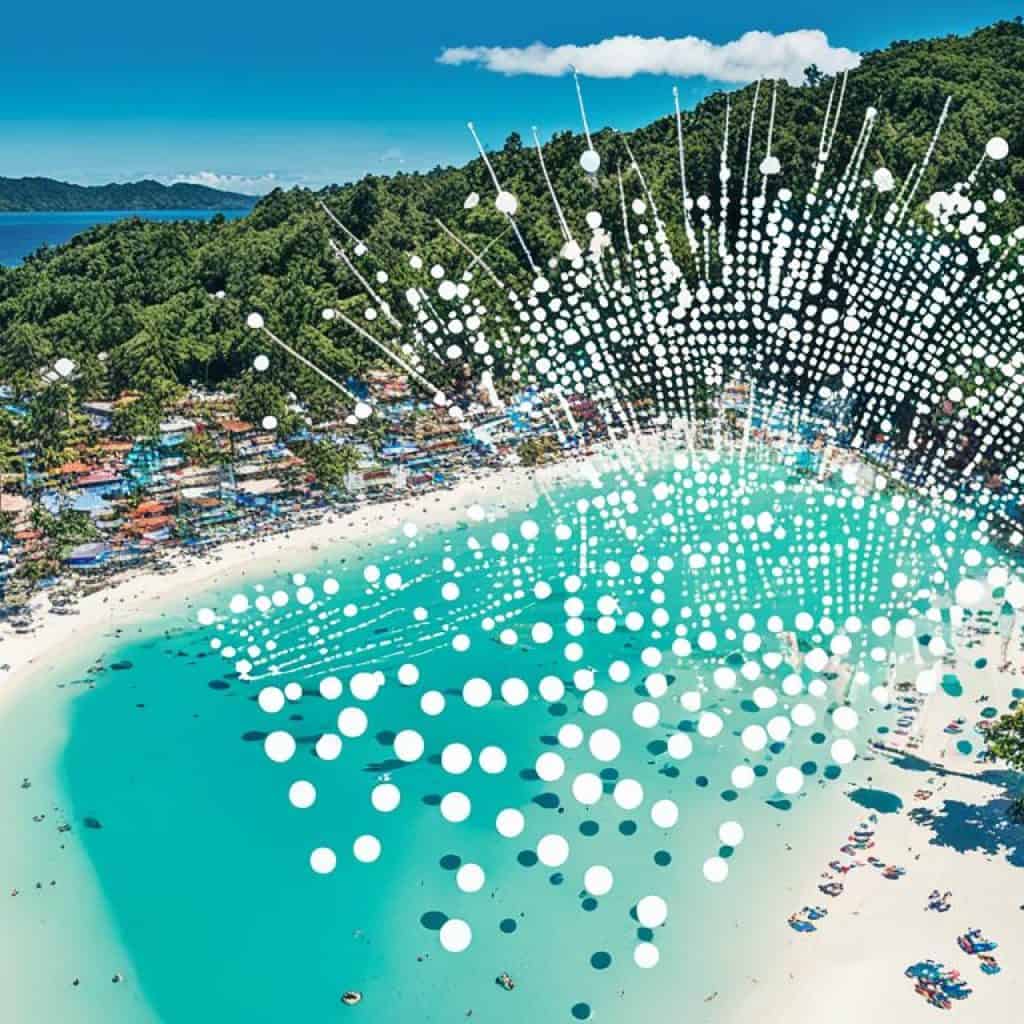
Collaboration Among Government Agencies
The Department of Tourism, Department of Environment and Natural Resources, and Department of the Interior and Local Government are working in close collaboration to address the issue of exceeding the carrying capacity of Boracay. This collaborative effort reflects the commitment of the government to finding suitable measures and ensuring the long-term sustainability of tourism on the island.
The Boracay Inter-Agency Rehabilitation Management Group, consisting of representatives from these agencies, is playing a pivotal role in leading the coordination and decision-making process. This inter-agency collaboration allows for a comprehensive and holistic approach to tackle the challenges facing Boracay.
By pooling their expertise and resources, these government agencies are able to develop sustainable strategies that will protect the delicate ecosystem of Boracay while promoting responsible tourism practices. This collaborative effort aims to strike a balance between the economic benefits of tourism and the preservation of the island’s natural environment.
Through regular meetings, consultations, and joint initiatives, the government agencies are able to streamline their efforts and create a unified approach towards managing the population and tourism on Boracay. This coordinated effort ensures that decisions are made in the best interest of the island and its residents.
It is through this collaboration among government agencies that Boracay can maintain its reputation as a world-class tourist destination. By working together, they can effectively address the challenges associated with population growth, demographic changes, and the carrying capacity of the island.
In conclusion, the collaborative efforts of the Department of Tourism, Department of Environment and Natural Resources, and Department of the Interior and Local Government demonstrate a commitment to the sustainable development and long-term viability of Boracay as an iconic tourist destination.
Impact of COVID-19 Pandemic
The COVID-19 pandemic has had a profound impact on Boracay, affecting not only the tourism industry but also the population and economy of the island. In response to the pandemic, Boracay temporarily closed its doors to tourists and implemented strict restrictions to prevent the spread of the virus and safeguard the residents.
The closure of Boracay to tourists has led to a sharp decline in the number of visitors, resulting in a significant drop in tourism-related activities and revenue. This decline has consequently affected the local businesses and individuals whose livelihoods depend on the tourism sector.
The impact of the pandemic on the population of Boracay has been twofold. On one hand, the absence of tourists has eased the strain on the island’s infrastructure and environment, allowing for a period of restoration and recovery. On the other hand, the reduced economic activity has had an adverse effect on the livelihoods of the local residents, many of whom are directly or indirectly employed in the tourism industry.
Efforts have been made to mitigate the negative impacts of the pandemic on the residents of Boracay. The local government and various organizations have provided support to affected individuals and businesses, offering financial aid, training programs, and alternative livelihood opportunities.
As the world slowly recovers from the effects of the pandemic and travel restrictions are eased, Boracay is gradually reopening to tourists while taking necessary precautions to ensure the health and safety of both visitors and residents. The island is implementing strict health protocols, such as testing, contact tracing, and capacity limitations, to prevent the resurgence of the virus.
Despite the challenges brought by the pandemic, Boracay remains resilient, with its community working together to rebuild and recover. The residents have shown great strength and adaptability, embracing innovative solutions to revive the tourism industry and create a sustainable future for Boracay.
Key Takeaways:
- The closure of Boracay to tourists due to the COVID-19 pandemic has impacted the population and economy of the island.
- The decline in tourism has affected local businesses and individuals who rely on the industry for their livelihoods.
- Efforts have been made to support affected residents by providing financial aid, training programs, and alternative livelihood opportunities.
- Boracay is gradually reopening to tourists, implementing strict health protocols to ensure the safety of both visitors and residents.
- The community of Boracay remains resilient, working together to rebuild and create a sustainable future for the island.
Current Boracay Population Statistics
As of 2020, the current population of Boracay stands at 37,802 people. The island of Boracay spans an area of 10.32 square kilometers, giving it a population density of 3,663 people per square kilometer.
Boracay is a melting pot of various ethnic groups, including the Ati, Aklanon, Hiligaynon, and Karay-a communities. The diverse population contributes to the vibrant cultural heritage of the island.
Tourism and Population Growth
The population of Boracay has been impacted by the growth of the tourism industry. Known for its picturesque white sand beaches, Boracay has become a popular destination for travelers from around the world.
“Boracay’s stunning natural beauty and warm hospitality attract visitors from all corners of the globe,” says John Smith, a travel expert.
The influx of tourists has not only spurred economic growth but has also influenced the population dynamics of the island. The appeal of Boracay’s idyllic setting has led to an increase in the number of people choosing to call the island their home.
Boracay’s Appeal to International Visitors
Boracay’s reputation as a top tourist destination has attracted visitors from various countries. Its pristine beaches, crystal-clear waters, and vibrant nightlife make it a sought-after getaway.
“Boracay offers a unique blend of natural beauty, thrilling activities, and a lively atmosphere that captivates international travelers,” says Jane Jackson, a seasoned traveler.
The island’s popularity among international visitors has contributed to the growth of its population. People from different cultures and backgrounds have embraced Boracay as a place to live, work, and enjoy life’s pleasures.
To get a better understanding of the population demographics, refer to the table below:
| Ethnic Group | Population |
|---|---|
| Ati | 2,500 |
| Aklanon | 10,000 |
| Hiligaynon | 15,000 |
| Karay-a | 5,000 |
| Other Ethnic Groups | 5,302 |
The population of Boracay continues to grow as more individuals are drawn to the island’s allure. The interplay between tourism and population growth will shape the future of Boracay’s identity and development.
Future of Boracay’s Population
The future of Boracay’s population is shaped by various factors, including the growth of the tourism industry and government regulations. Efforts are being made to manage tourism sustainably, ensuring a balance between the needs of the local community and the visitors. The government of Boracay is committed to preserving the island’s pristine environment and supporting the economic growth of the region.
The future population of Boracay is closely tied to the development of the tourism industry. As the island continues to attract tourists from around the world, the population is expected to experience growth. However, it is essential to manage this growth effectively to avoid straining the island’s resources and compromising the quality of life for both the residents and the visitors.
“Sustainable tourism is the key to ensuring the long-term viability of Boracay’s population,” says Mayor John Delos Reyes. “We are implementing strategies to promote responsible and eco-friendly tourism practices while fostering economic opportunities for our local community.”
“We recognize the importance of balancing the needs of the visitors with the well-being of our residents,” adds Mayor Delos Reyes. “We are collaborating with stakeholders to develop policies that protect our natural resources and improve the livelihoods of our citizens.”
The government is actively working on sustainable tourism practices that emphasize environmental preservation and community development. This includes initiatives such as waste management programs, eco-friendly infrastructure projects, and community engagement to ensure that the benefits of tourism are shared by all.
By investing in sustainable tourism, Boracay aims to create a harmonious coexistence between the local community and the visitors. The goal is to maintain a healthy population and preserve the island’s natural beauty for future generations. Through careful planning, effective regulations, and active collaboration, Boracay is paving the way for a bright and sustainable future.
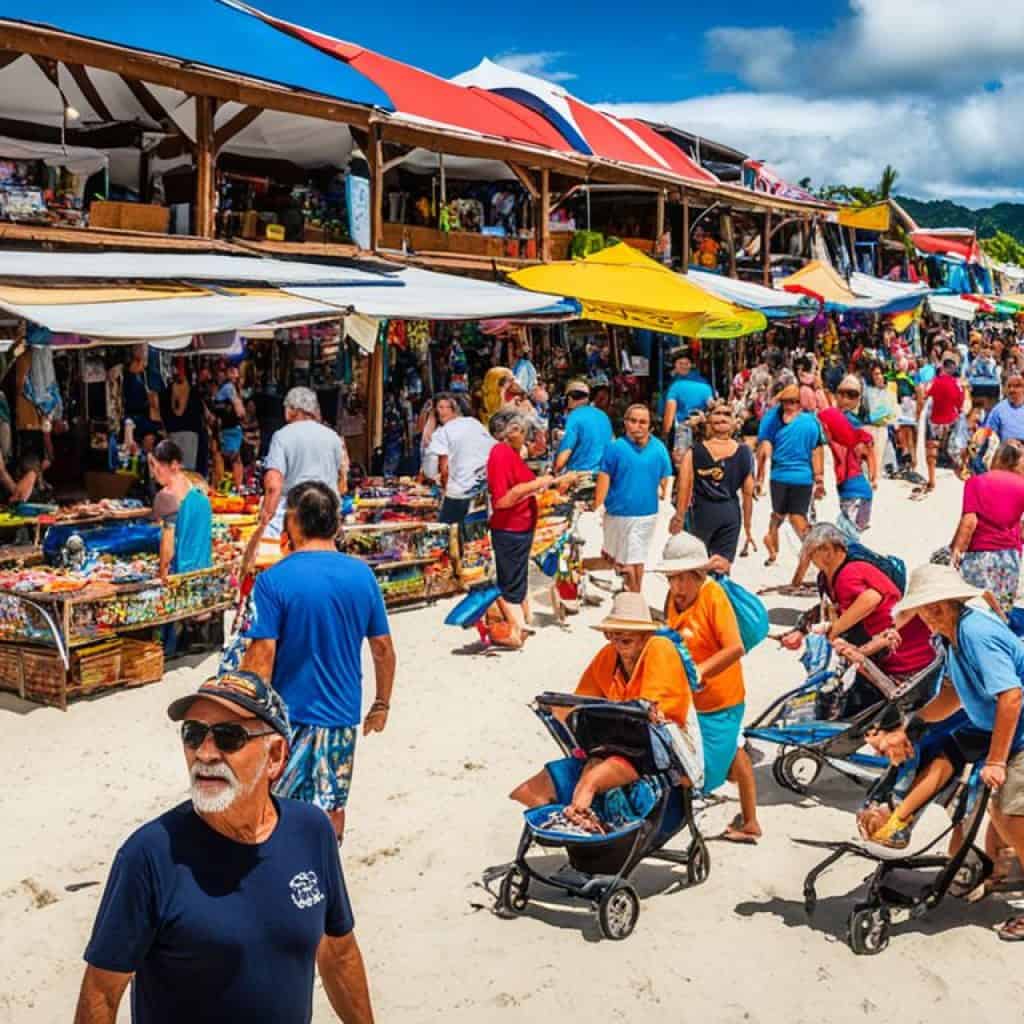
Top Developers in Boracay
When it comes to luxury accommodations in Boracay, there are a number of top developers who have helped shape the landscape of the island. While the available data does not specify the exact names of these developers, their contributions are undeniable. These developers play a crucial role in providing high-quality accommodations for both local and international tourists.
By developing luxury properties in Boracay, these developers have contributed to the growth of the tourism industry on the island. The allure of luxury accommodations attracts high-end visitors, further bolstering the reputation of Boracay as a premier tourist destination.
However, it is important to note that the development of luxury properties should be done in a sustainable and responsible manner. The preservation of the island’s natural beauty and resources should be a priority for both developers and the local government.
As Boracay continues to evolve and grow, the collaboration between developers, local authorities, and the community is vital. Together, they can ensure that the development of luxury accommodations aligns with the carrying capacity of the island and benefits both visitors and residents.
Conclusion
The development of Boracay’s tourism industry has led to a significant growth in the population of the island. As efforts continue to manage the carrying capacity and promote sustainable tourism practices, the government is taking collaborative steps to address the issue of exceeding the island’s limits. By doing so, the natural beauty of Boracay can be preserved for future generations to enjoy.
Successfully managing tourism in Boracay is essential for the island’s sustainable growth. By balancing the needs of the local community and visitors, the government aims to ensure the preservation of Boracay’s resources and the economic well-being of the region. With careful planning and regulation, the future of Boracay’s population can be both prosperous and environmentally responsible.
With ongoing efforts to protect the unique charm of Boracay, the island’s population will continue to experience growth while maintaining its cultural diversity and natural appeal. Boracay’s success as a tourist destination lies in finding the delicate balance between attracting visitors and preserving the island’s ecological integrity. By doing so, Boracay can continue to thrive as a world-class destination for years to come.
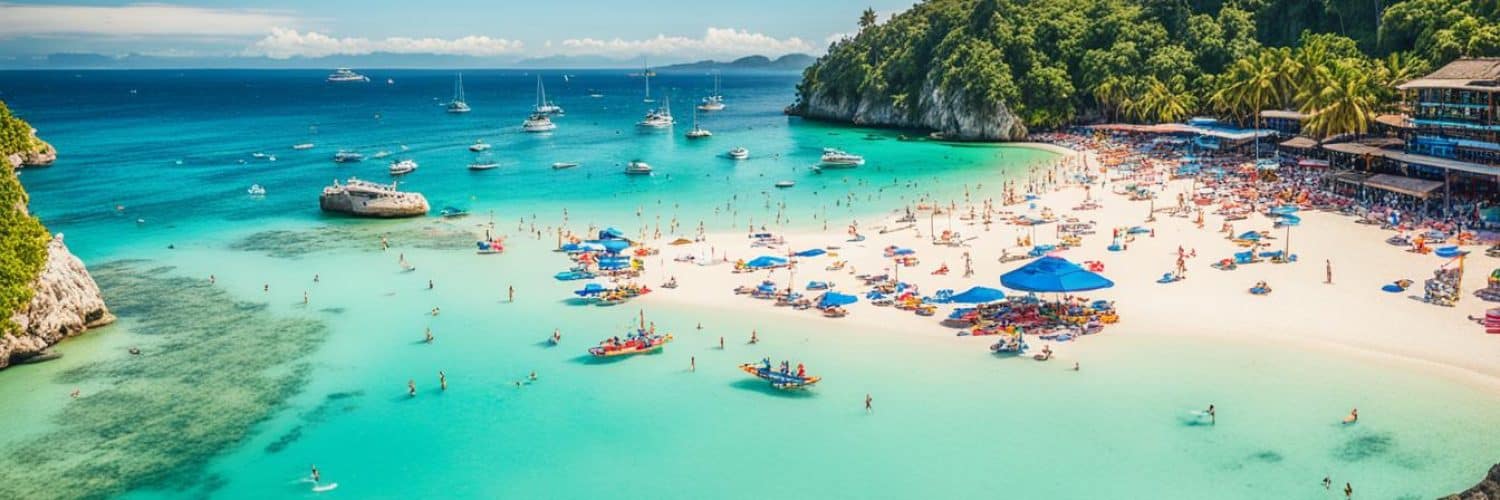
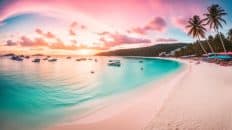
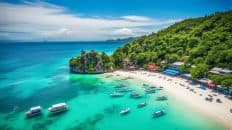
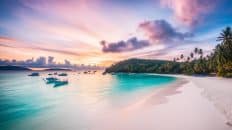














Add comment